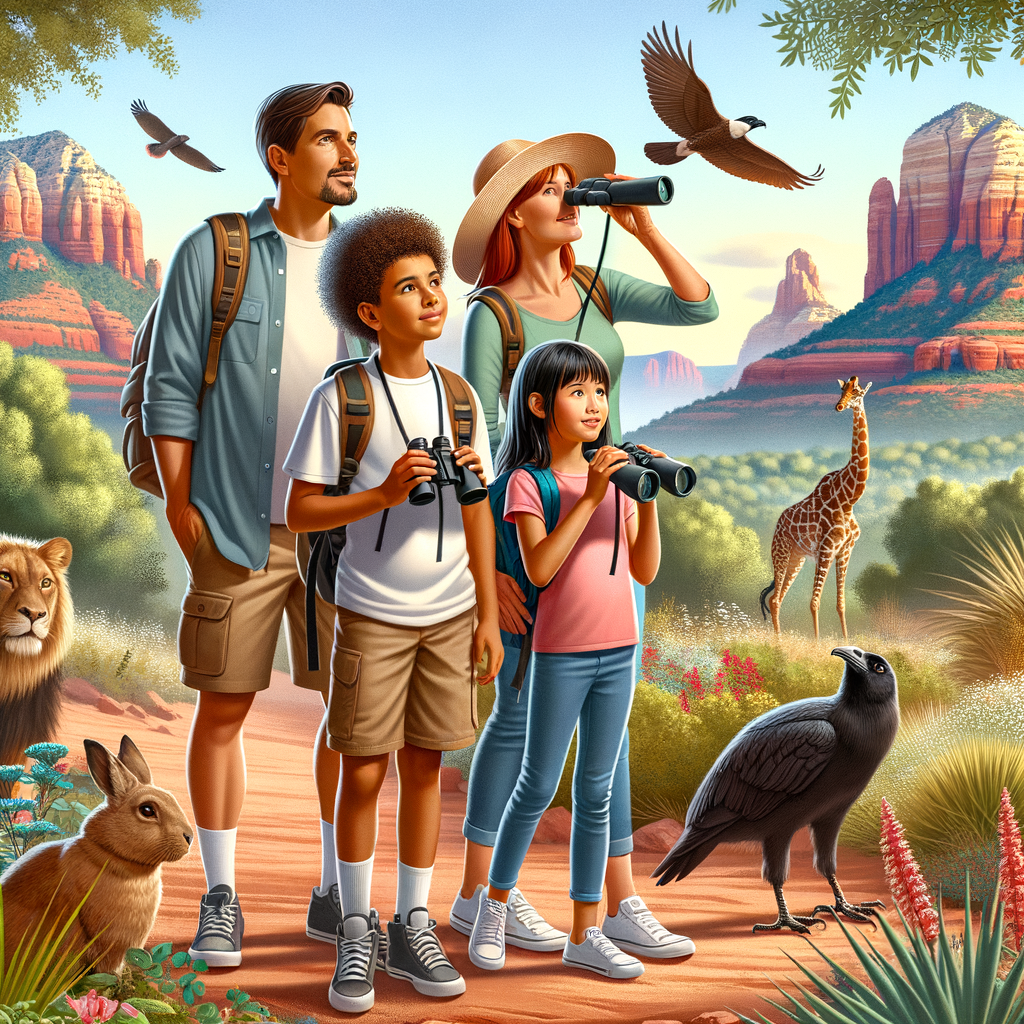Enhancing Your Hiking Experience with Binoculars for Wildlife Viewing
“`html
Hiking with Binoculars: Enhance Your Wildlife Spotting Experience
The Joy of Spotting Wildlife on Hikes
Hiking isn’t just about the scenic views and the exercise; it can also be an extraordinary opportunity to connect with nature on a deeper level. Imagine trudging through a beautiful trail, feeling the warmth of the sun, and suddenly spotting a deer gracefully leaping in the distance or observing a hawk soaring high above. These moments are what make hiking magical. With the help of binoculars, you can turn a regular hike into a thrilling expedition where you can observe wildlife closely without disturbing them.
Moreover, using binoculars can elevate your entire hiking experience. It allows you to appreciate the subtleties of nature that you may overlook at a distance. The flutter of a hummingbird’s wings, the rustle of a small critter hidden in the bushes, or the intricate patterns on a butterfly—these are little wonders that binoculars can unveil. Adding this simple tool to your hiking gear will not only enrich your adventure but may also ignite a newfound passion for wildlife observation.
Choosing the Right Binoculars for Hiking
Not all binoculars are created equal, especially when it comes to hiking. You’d want to consider several factors before making a purchase. First and foremost, weight is a critical aspect. When you’re trekking along rugged terrain, carrying bulky optic gear can become a chore. Look for lightweight and compact binoculars that are easy to handle and won’t weigh down your backpack. Typically, models that weigh under 1.5 pounds are a good fit for most hiking adventures.
Next, focus on the binoculars’ magnification and objective lens diameter. A common choice for hiking is 8×42 binoculars, which strike a balance between magnification and field of view. While higher magnification might seem appealing, it can be challenging to keep a steady view. Therefore, opting for binoculars that provide a clear view of wildlife without the need for excessive zoom works best. You’ll also want to consider the waterproof and fog-proof features to ensure resilience against the unpredictable elements of nature.
Binocular Brands Worth Considering
When it comes to selecting binoculars, familiarity with reputable brands can help break down the overwhelming choices available. Top choices like Nikon, Vortex, and Bushnell offer a wide range of options that are praised for their optical quality and durability. Nikon’s Monarch series, for instance, known for its exceptional light transmission, enhances your wildlife spotting experience. Meanwhile, Vortex’s Diamondback lineup provides budget-friendly models without compromising quality.
In addition, if you’re looking to invest in high-end binoculars, consider brands like Swarovski and Zeiss. These brands offer premium optic technology but come with a higher price tag. In the end, your choice will depend on your budget and how serious you are about binoculars as part of your hiking gear. It’s best to do some research and perhaps even try a few models in-store before deciding which pair will accompany you on your hiking escapades.
Essential Tips for Hiking with Binoculars
Before you head out on your adventure, there are a couple of tips that can help make the most of your experience with binoculars. First and foremost, practice using your binoculars beforehand. Familiarize yourself with the focusing mechanism and learn how to grip them properly. This way, when you spot that elusive animal, you won’t fumble around trying to get a clear view.
It’s also a good idea to secure your binoculars to your body using a strap. This prevents them from bouncing around while you hike and can save you from dropping them if you trip. Finally, always be respectful of wildlife. Do not intrude, and maintain a safe distance. Binoculars are designed for this purpose—to let you observe without intruding. Remember to enjoy the moment and take it all in, while letting nature remain undisturbed.
Finding the Best Spots for Wildlife Watching
Once you have your binoculars in tow, the next step is to find the right places for wildlife spotting. National parks, wildlife reserves, and even local hiking trails can host diverse wildlife. However, do some research on the best times of day for animal sightings, as many creatures are more active during certain hours. Early mornings or late afternoons are often prime times when animals emerge to feed.
Moreover, consider joining local wildlife watching groups. Many of these groups will organize hikes specifically aimed at spotting wildlife. This way, you can learn from experienced enthusiasts and share insights about the best locations and times to spot various species. Checking online resources and forums can also provide additional tips and tricks for finding those hidden gems amongst the trails.
Enhancing Your Hike: Be Mindful and Respectful
As you venture out into nature, it’s crucial to maintain mindfulness not just for your surroundings, but also for the wildlife. Avoid pursuing or disturbing animals to get a closer look. Use your binoculars to enjoy nature, but it’s important to let animals live freely without human interference. Adopting a respectful approach ensures ecosystems remain balanced and protects the wildlife you admire.
Always follow the Leave No Trace principles while hiking. This means carrying out what you bring in, staying on marked trails, and minimizing noise. Such practices are vital to preserving natural habitats for wildlife and future hikers. By integrating respect for nature into your hiking routine, you’ll develop a deeper connection with the environment and enjoy rewarding experiences each time you hit the trail.
Binoculars and Safety on the Trail
While focusing on wildlife can be thrilling, it’s important not to get too carried away. Always maintain awareness of your surroundings. Carrying binoculars can make it easy to lose sight of potential hazards like uneven terrain or other hikers nearby. Make it a habit to glance up frequently while looking through your binoculars to stay oriented and avoid any accidents.
Additionally, sharing your binoculars and experiences with hiking partners can enhance camaraderie. Encourage others to spot wildlife too, and take turns using the binoculars. This keeps everyone engaged and can lead to delightful discussions about what you observe. Safety in numbers applies in this case as well, so maintain communication with your hiking group about when and where you are spotting wildlife.
Conclusion
Hiking with binoculars opens a magical window into the world of wildlife that is often hidden from plain view. By investing in the right pair and following a few simple guidelines, your adventures can transform from simple nature walks to thrilling wildlife quests. Respect and mindfulness assure those moments remain precious, not just for you but for the wildlife, too. Grab your binoculars, hit the trails, and behold the beauty lurking just beyond reach!
FAQs
1. What type of binoculars are best for hiking?
The best binoculars for hiking are typically lightweight, compact, and offer a good balance of magnification and objective lens diameter—generally around 8×42. This offers a stable view and good light transmission for spotting wildlife.
2. Can I use my smartphone for wildlife spotting instead of binoculars?
While some smartphones offer zoom features that can be useful, binoculars generally provide a clearer, crisper image with better light gathering capability, making them more effective for wildlife observation.
3. How do I maintain my binoculars while hiking?
Keep binoculars safely stowed in a protective case when not in use. Clean the lenses carefully with a soft cloth to avoid scratches and keep them dry to prevent moisture buildup.
4. What should I do if I see a wild animal while hiking?
Observe from a safe distance and avoid making loud noises or sudden movements. Using binoculars allows you to enjoy watching without disturbing the animal or affecting its natural behavior.
5. Is there a specific time of day that’s best for hiking with binoculars?
Early mornings and late afternoons are typically the best times for wildlife spotting, as many animals are often more active during these periods, making it easier to catch a glimpse.
If you are interested in looking into an organized tour for you and your kids, consider visiting our preferred vendor: Sedona Red Rock Adventures.
“`
news via inbox
To be update with all the latest news.




